‘Kool-Aid Man in Second Life’
by Jon Rafman
[Click the image above to make it play]
This gets totes NSFW toward the end, btw. Yum yum. READ MORE >
‘Kool-Aid Man in Second Life’
by Jon Rafman
[Click the image above to make it play]
This gets totes NSFW toward the end, btw. Yum yum. READ MORE >
heat on the southside
I.
last night, police cordoned the four square
blocks surrounding my house in pursuit of a thug
who unloaded on the shell of a gangsta
in the funeral parlor filled with formaldehyde
and lead. black folks scattered, staining
complicated streets. i settle in for summer:
the maze to the front door, running teens
smelling of weed and tragedy from my stoop
reminding my sons they are not sources
of admiration, praying that might change. not yet
june heat rises like the murder rate, gleam
and pop already midnight’s bitter tune
II.
fifteen years ago, tyehimba jess
told me about a funeral home
with a drive through window.
you pull up, push a call button
through bulletproof glass a friendly
somber attendant takes your request.
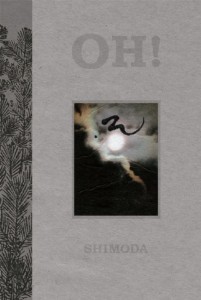 One of the things I love most about attending literary events is learning about presses and writers with which I am not familiar. At the Pop Up Bookstore in Chicago this past weekend, I found this gorgeous book, Oh, by Todd Shimoda with artwork by Linda Shimoda, published by Chin Music Press. As an art object, this book is gorgeous–heavy, textured papers, a gorgeous hardcover, and though I just started the book, I haven’t been able to put it down. I decided to look them up online and they have a lot going on. I was especially interested in this blog post, by Bruce Rutledge, about books as art objects and what it costs to publish beautifully designed books. Check them out.
One of the things I love most about attending literary events is learning about presses and writers with which I am not familiar. At the Pop Up Bookstore in Chicago this past weekend, I found this gorgeous book, Oh, by Todd Shimoda with artwork by Linda Shimoda, published by Chin Music Press. As an art object, this book is gorgeous–heavy, textured papers, a gorgeous hardcover, and though I just started the book, I haven’t been able to put it down. I decided to look them up online and they have a lot going on. I was especially interested in this blog post, by Bruce Rutledge, about books as art objects and what it costs to publish beautifully designed books. Check them out.
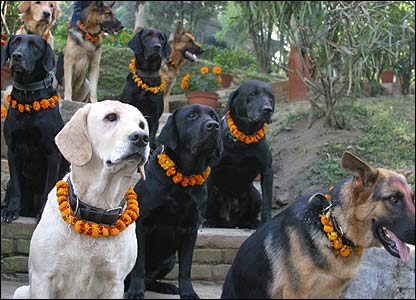
1. Of all the online issues of magazines I’ve read and stared at, this is probably still the one I still open and stare and feel motivated by getting peeks of: Johannes Göransson’s guest edited all modern Swedish poetry issue of Typo.
2. At Vice, excellent interview with photographer Antonie D’Agata: “In this process of fictionalising an unreachable truth, it’s up to them to impose their doubts about any photographic truth, or accept being impotent pawns in the mediatic game.”
3. Argos Books is a press new to me who is having a year end sale on some beautiful handmade book objects.
4. At Ubu, Samuel Beckett’s “Film” starring Buster Keaton from 1965. 24 minutes of almost total silence.
5. Free download of Foucault’s Fearless Speech (2001), a series of 6 lectures he delivered just before his death, re: “Parrhesia is a verbal activity in which a speaker expresses his personal relationship to truth through frankness instead of persuasion, truth instead of flattery, and moral duty instead of self-interest and moral apathy.”
I’ve been watching a lot of television lately. Television off the internet. This is a preferable way to watch television. For one, I don’t have to deal with commercials. Also, I can watch a whole season at a time, and being naturally obsessive, I can’t deal with the suspense of waiting an entire week—much less a whole year for a new season to start—to find out “what happens.” That being said, I have to wait on two shows now, which brings me great displeasure and discomfort.
I’ve seen a few things recently, and I’ve struggled to understand what makes them enjoyable, what compels me to keep on watching. After all, if I weren’t watching television or movies, I could be reading. (Though to be fair to myself, I spend my days trekking through fairly dense geographic texts, so by the evening, I like to relax with my partner and our two cats, “turn off” so to speak, even though I know my time could be spent in a more “productive” manner.)
But even as I’m “turning off” and letting myself get tangled in television or film, I remain critically alert. And in the end, I realize the reason I love watching what I’ve watched is because through these particular shows and films, my morality is challenged and I not only empathize but also desire the success of immoral characters. It is not unlike the experience of reading Crime & Punishment, where the reader rallies for Raskolnikov, even though he is a murderer. We don’t want him to get caught. We want him to be ok. We want the best for him. And in the end, as his consciousness fractures under the weight of his lawfully unpunished crimes, we want him to be physically punished, just to alleviate the psychological punishment.
[series note: This post is the fifth of five, in a week-long series examining first sentences or paragraphs. It’s not my intention to be prescriptive about what kinds of first sentences writers ought to be writing. Instead, I hope to simply take a look at five sets of first sentences for the purpose of thinking about how they introduce the reader to the story or novel to which they belong. I plan to post them without commentary, as one might post a photograph or painting, and open up the comment threads to your observations as readers. Some questions that interest me and might interest you include: 1. How is the first sentence (or paragraph — I’ll include some of those, too, since some first sentences require the next few sentences to even be available for this kind of analysis) interesting or not interesting on grounds of language? 2. Does the first sentence introduce any particular (or general feeling of) trouble or conflict or dissonance or tension into the story that makes the reader want to keep reading? 3. Does the first sentence do anything to immerse the reader in the donnee, the ground rules, the world of the story, those orienting questions such as who speaks, when and where are we in space and time, etc.? 4. Since the first sentence, in the wild, doesn’t exist in the contextless manner in which I’ve presented these, in what kinds of ways does examining them like this create false ideas about the uses and functions of first sentences? What kinds of things ought first sentences be doing? What kinds of things do first sentences not do often enough? (It seems likely to me that you will have competing ideas about first sentences. Please offer them here. Every idea or observation gets our good attention.) The sentence/paragraph sets we’ve been or will be observing: 1. first sentences from Mary Miller’s Big World; 2. first sentences from physically large novels; 3. the first sentences from every book written by Philip Roth; 4. first sentences from the Norton Anthology of Short Fiction; 5. first sentences from Best European Fiction 2010.]

“Albania is a country where no one ever dies.”
– from The Country Where No One Ever Dies, Ornela Vorpsi
“If I had urinated immediately after breakfast, the mob would never have burnt down the orphanage.”
– “The Orphan and the Mob,” Julian Gough
“A cousin of mine had an aquarium built on her terrace, a rather imposing tank where strange, exotic sea creatures amused themselves in the company of all sorts of local specimen, destined to be eaten.”
– from While Sleeping, Antonio Fian READ MORE >
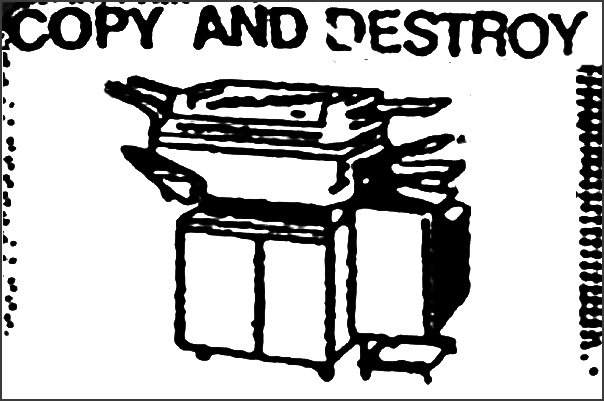
Karen Lillis is currently serializing a memoir about working at St. Mark’s Bookshop called Bagging The Beats At Midnight: Confessions of an Indie Bookstore Clerk over at Undie Press. Her recent installment, titled “People Who Led Me to Self-Publishing,” discusses the inspiring and energetic figures she encountered, people who took artistic matters into their own hands by making sloppy, lo-fi xeroxed booklets that were sold on a special consignment rack at St. Mark’s. Karen reminds us that writers such as Anais Nin, William Blake, Walt Whitman, Kathy Acker, Gertrude Stein, and others all self-published at one point. There’s a certain magic about it—the immediacy of it, the openness, the way any wing nut or fanatic or obsessive outsider can be given an equal hearing on the consignment rack. No filtration or editorial process—just print, copy, distribute.
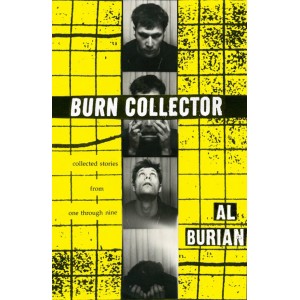 In a recent email I sent to Al Burian, I wrote that I was interested in bridging the gap between the small press/indie publishing world and the self-publishing/zine world. Al is kind of a cult figure in the self-publishing world, but is probably virtually unknown to small press and indie lit readers (although he did get some kind of honorable mention in The Best American Nonrequired Reading series one year). I’ve been reading his zines since I was 13 and I’m still totally obsessed with them. Since Al Burian was my favorite zine writer, over the years I let everyone I knew borrow his writings—teachers, friends, family. Some instantly became obsessive fans of his work as well. Since last month Al’s out-of-print collection of early zines, titled Burn Collector, is finally back in print after being republished by PM Press. (You should check it out—I’ve probably read it more times than any other book in my life.) Al’s zine Burn Collector and others like his inspired me to start self-publishing when I was 15.
In a recent email I sent to Al Burian, I wrote that I was interested in bridging the gap between the small press/indie publishing world and the self-publishing/zine world. Al is kind of a cult figure in the self-publishing world, but is probably virtually unknown to small press and indie lit readers (although he did get some kind of honorable mention in The Best American Nonrequired Reading series one year). I’ve been reading his zines since I was 13 and I’m still totally obsessed with them. Since Al Burian was my favorite zine writer, over the years I let everyone I knew borrow his writings—teachers, friends, family. Some instantly became obsessive fans of his work as well. Since last month Al’s out-of-print collection of early zines, titled Burn Collector, is finally back in print after being republished by PM Press. (You should check it out—I’ve probably read it more times than any other book in my life.) Al’s zine Burn Collector and others like his inspired me to start self-publishing when I was 15.
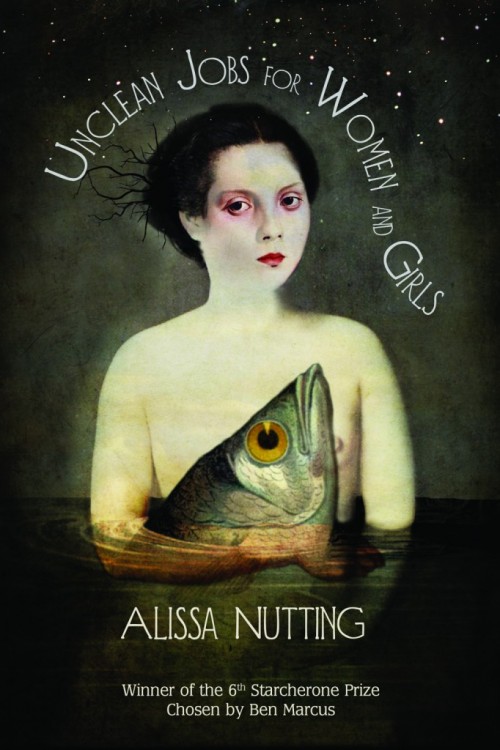 I love a book with a good title. I love good titles in general. When I’m bored, I sit around writing titles, placing each one in its own Word file so when I feel like writing but want to work on something new, I just need to look at all those empty, waiting documents, pick the one with the title that intrigues me the most, and start writing. Ever since I first heard of Unclean Jobs for Women and Girls by Alissa Nutting (Starcherone Books), I have been charmed by the title and I finally had the chance to really sit down with the book. I ended up reading it one sitting because it was one of those books you literally cannot put down. The stories in this collection are smart and imaginative and strange and fearless in their execution. It is readily evident why this book won the Starcherone Prize for Innovative Fiction. A great deal of care and handling went into these stories.
I love a book with a good title. I love good titles in general. When I’m bored, I sit around writing titles, placing each one in its own Word file so when I feel like writing but want to work on something new, I just need to look at all those empty, waiting documents, pick the one with the title that intrigues me the most, and start writing. Ever since I first heard of Unclean Jobs for Women and Girls by Alissa Nutting (Starcherone Books), I have been charmed by the title and I finally had the chance to really sit down with the book. I ended up reading it one sitting because it was one of those books you literally cannot put down. The stories in this collection are smart and imaginative and strange and fearless in their execution. It is readily evident why this book won the Starcherone Prize for Innovative Fiction. A great deal of care and handling went into these stories.
In Contemporary American Novelists of the Absurd, Charles Harris writes, “The absurdist vision may be defined as the belief that we are trapped in a meaningless universe and that neither God nor man, theology nor philosophy, can make sense of the human condition.” As I’ve read about Unclean Jobs for Women and Girls over the past couple months, I’ve often seen references to the writing as absurdist fiction. I would disagree. While many of the stories have a surreal, almost absurd quality to them, the stories by no means imply that they are a response to a belief that we are trapped in a meaningless universe because so many of the characters in these stories are clinging to the hope that there is, indeed, some meaning in the universe. In each of these stories, Nutting is, above all making beautiful sense of the human condition.

What is the most exciting non-human creature in your novel? Mine is a capybara. If you say “dog” or “adorable dog” or “talking dog” then you are everything that’s wrong with contemporary literature.

Generously translated and sent by Paul Buchholz.
ZEIT: Do you like American writers?HANDKE: Not the recent ones. I’m always thinking again: how wonderful literature would be without all these period-, family- and society-novels. [Theodor] Fontane could maybe still do that, but today it’s a form of sagging culture. I translated Walker Percy, The Last Gentlemen and The Moviegoer, that is a great author. And I love Thomas Wolfe, his novel Look Homeward, Angel. These books have something lyrical, that is absolutely a part of them. With Jonathan Franzen for instance it doesn’t appear at all. He follows a knitting pattern, a scheme. Philip Roth is in the end only a master of ceremonies. But reading is an adventure. In a book, also in a society novel, its seeking movement has to be there in the language. There is no epic literature without a lyrical element. But that has completely disappeared from American literature. There have to be outbreaks, a controlled letting-oneself-go, not this recipe-like writing. Something has to emit from the author, whether that comes from his being lost or from his pain. When, with an author, one only sees the making–to avoid the word Mache [style]–that’s not enough.